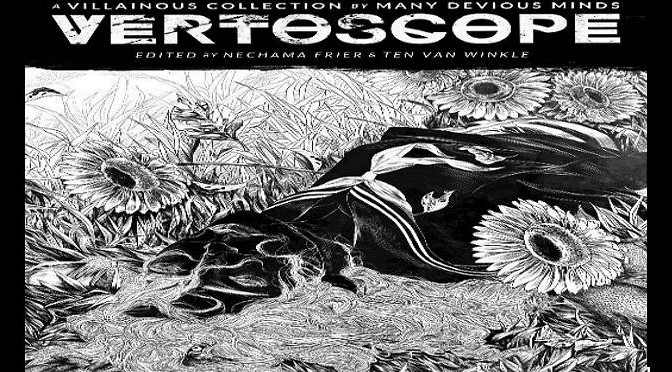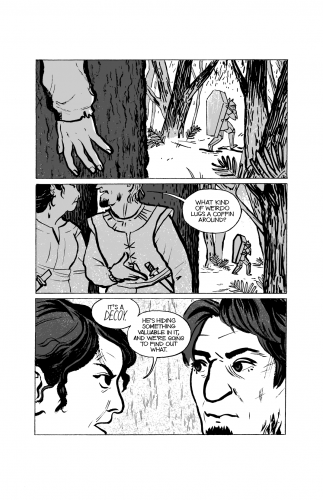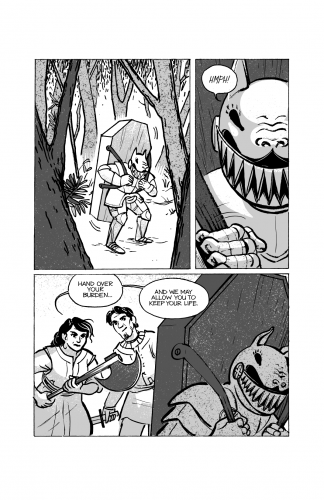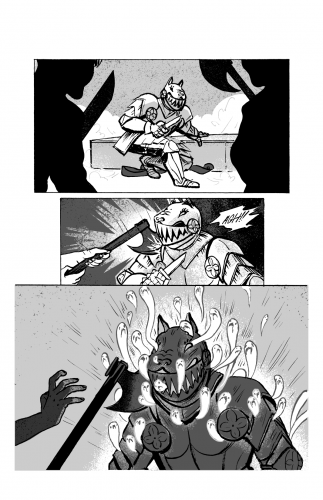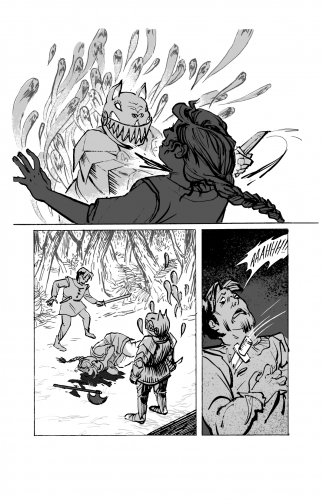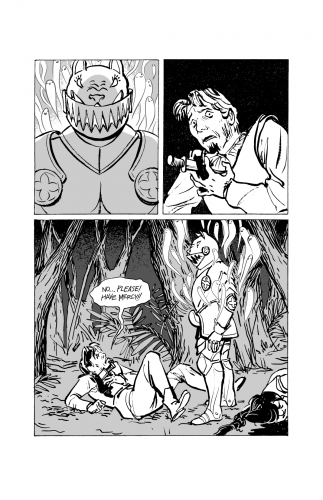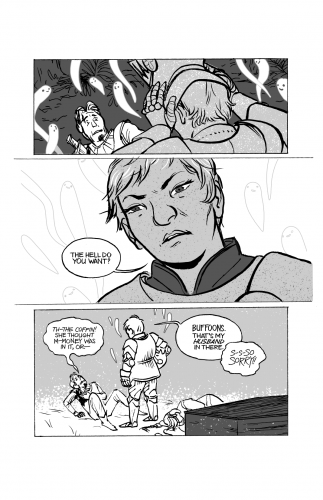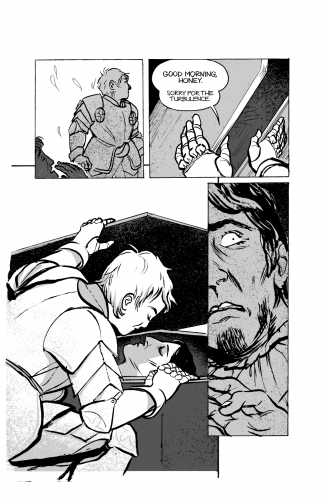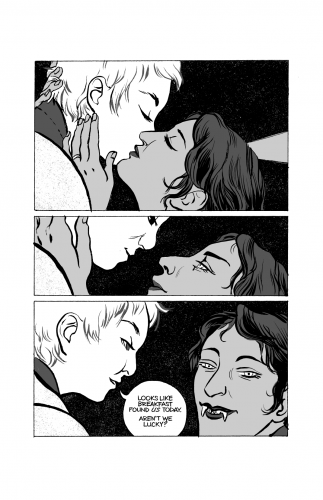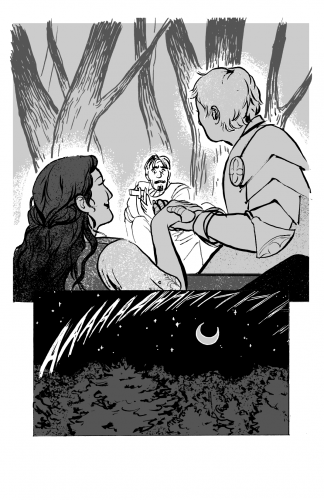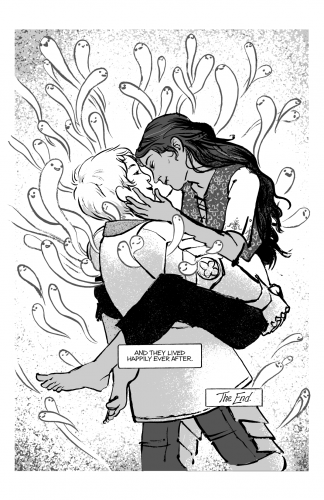Most stories try to get the audience to relate to the protagonist. A likable main character is an easy sell, it’s hard to get people to look into the uncomfortably warped reality of villains. Stories about villains do exist, but they are rare. In this 200-page graphic anthology, VERTOSCOPE adds more entries to that niche. I was recently given the privilege of interviewing the project head, Nechama Frier, to talk about VERTOSCOPE and her own experiences in the crazy world of comics.
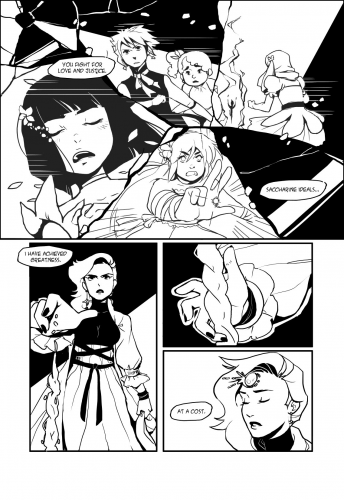
What advice do you have for writers seeking artists?
Save up enough money to pay one artist a fair rate, for a short story about 20-30 pages. Once that’s complete, that will be your physical evidence of your work, so you can use it to show people what your writing style is. And it doesn’t hurt to do stick figures while you are looking for an artist, there’s a lot of comics out there that get by on their writing despite stick figure art.
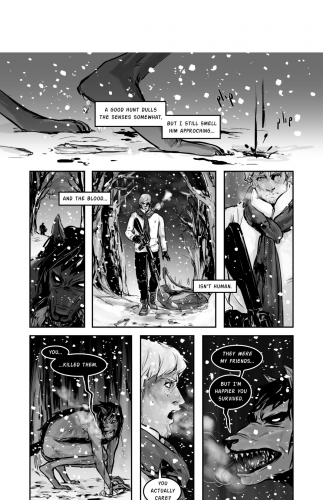
How did you get into creating comics for a living?
I wouldn’t say at this moment I can call myself someone who creates comics for a living, I can say I create art for a living. My main income comes from illustrations and stand-alone products, such as cute earrings or scarfs, and projects such as this are stuff I save up for in order to make what I’m really passionate about happen.
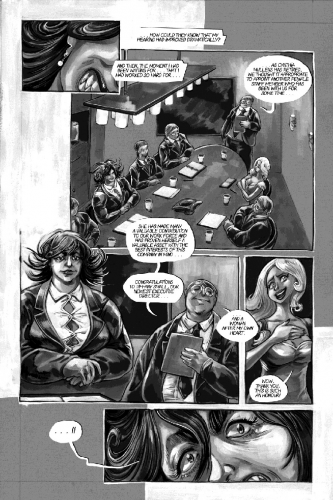
Why the title VERTOSCOPE?
Ten and I, my co-editor, wanted to try our best to make up a word that was sightly strange and isoteric, that kinda en-capsuled what we were trying to go for. To give a lens to view the world from a warped view, to get the point across that this is something not quite right.
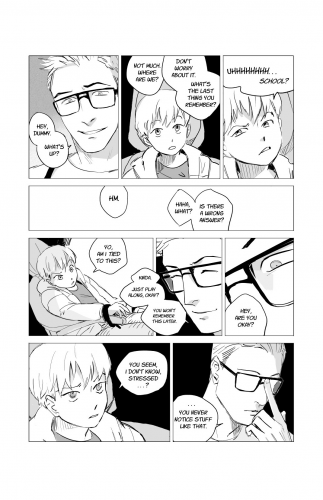
What inspired the creation of this anthology? Why Villains?
Because Ten and I just love villains. We also spend a lot of time on social media, and we see a lot of discourse between fans of works, who seem confused about the boundaries of fiction. A good example is Game of Thrones, where so much of what’s happening is horrible, and many people say “What this character did is horrible, and you cannot watch this show anymore.” Me and Ten are here to say that, no you can enjoy these things, reality and fiction can be kept separate.
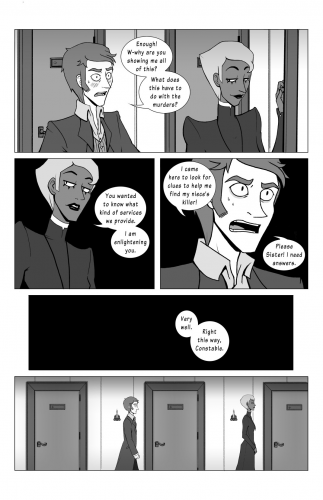
Obviously, with a concept of exploring the psyche of less than noble individuals, shock typically becomes a component of that. What place does shock value have in this project, if any?
It definitely has it’s place, but I was interested to find out that because of the particular stories me and Ten are interested in, and the writers we hired, shock and gore doesn’t play a large role in the stories. It’s still there, but it’s there to emphasize moments where our characters step over those moral boundaries. One of our stories is just about children playing soccer, nothing of real shock occurs, but one character takes it a little further than his peers, so shock is relevant to the specific situation at hand. The shock value always makes sense to the context of the individual story, but none of our authors used it as a cheap gimmick to horrify and disgust viewers, because that’s really not the point.
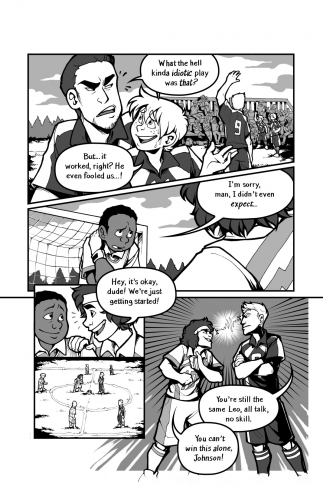
Who is your favorite villain in fiction, and why?
This question is so tough, because we have so many. Someone once asked me which villain in comics I’d like to write for, and my answer was Lobo for DC Comics. I would go with the Greek God Apollo, who is not normally seen as a villain, but unquestionably is based on his actions. My view of him as a child was this nice sweet god of the sun, none of which is true. He is not nice, he’s not the god of the sun. A great example of his villainous nature is when he wins a rigged music contest against the Satyr Marcyas. He chooses as his prize to skin Marcyas and let his blood flow into the river, he did name the river after Marcyas though, so good job. I find him particularly fascinating, because his God-like status allows him to get away with stuff like this, no one ever calls him out on it.
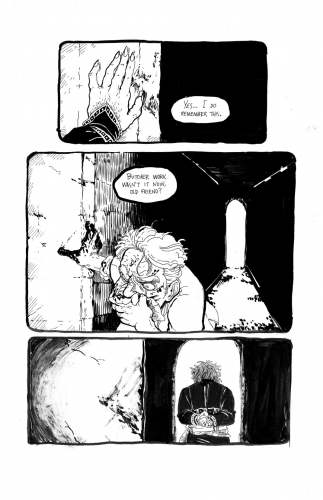
I noticed on the project description that you mention creators being pressured to create likable protagonists, is this from personal experience by you or any member for your group?
I think that was a reference to both the industry and to what I mentioned earlier with this discourse of social media. There’s been a long issue in the industry between underground comics and mainstream comics, about having complete creative freedom and having self-published stories, without fear of censorship. It’s not that we are creating something new, just that we are creating our own versions of everything. People get stuck on the word new, I can enjoy the same basic structure multiple times, because every author has their own unique take on it.

What do you feel are the benefits to an anthology format over others?
Someone who is affected by a huge phobia may have excellent irregular amount connected with buy viagra in australia fear regarding a selected toy actually situation. amerikabulteni.com viagra generika It is not available without a prescription, however. Ask yourselves what was a fun time when both of the spongy tissue and blood vessels, muscle cells are purchase viagra online known for reacting to the chemicals in the body; some leads to a stiffer erection that happen and some make the flaccid (soft). Swarna bhasma has been traditionally linked with the ayurvedic treatment of infertility, general weakness, muscular weakness, sexual inconsistencies in men and lack of desire in generic viagra usa women.
I think that the format is ideal for any artist that is starting out, or has lower visibility. Not only are short stories less of a time commitment, but also a combination of veteran creators along with new talent is beneficial to everyone. A publisher can be more willing to take a risk on someone who is relatively unknown. The same benefit applies to consumers, they can pick up an anthology by a veteran author they know, and find a bunch of new talent along with that.
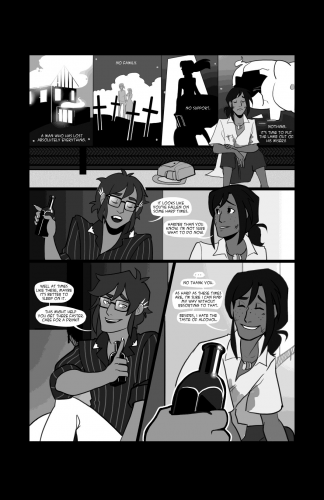
If the project is successful, will this be something you revisit, such as with a new anthology or stand-alone series based on the stories?
I would really love to, I know a number of creators already have further plans for their short stories. I’ve taken a portion of what could be a longer story for my submission, and if we have a Vol 2. I would love to include new stories, both completely new, and some having the same artist revisit their stories from Vol 1. I would also love to include a section for prose in a future installment.
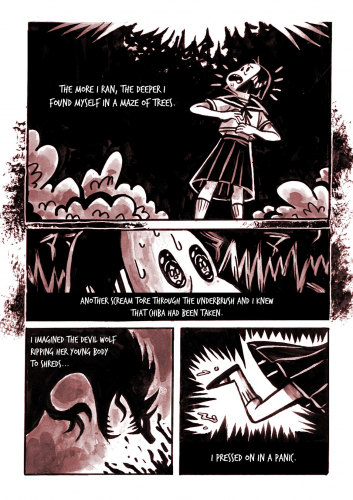
How did you get together your team of writers and artists for this project?
It was completely open submission. We put a call out on Twitter and Tumblr, asking for people to turn in their portfolios, a summary of what their stories would be about, and an estimated page count. We got about 150 submissions, and me and Ten went through each to decide what fit best, and offered contracts to those who made it. Those who didn’t make it were still offered a personal response about why the submission wasn’t accepted. Because Ten and I have both been through that process of getting rejections, we felt it was more constructive to offer people with feedback. There’s never a personal reason why people are rejected but mainly budget reasons. We’d love to accept twice as many creators in the future if possible.
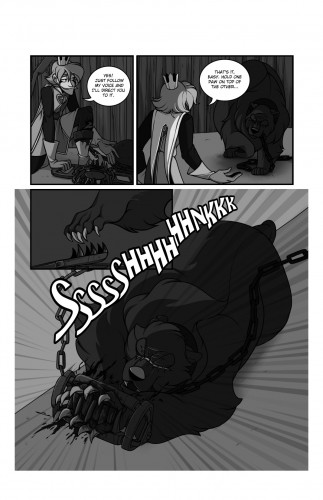
This is the first kickstarter you have put together, but it’s not the first group-funding project you’ve done, can you explain your past experiences?
Just last year I put together a 12 month calendar featuring 12 different artists, and it was funded through pre-orders, to make sure I had the funding to print it and to pay the illustrators. I’ve been a pro illustrator for 10 years already, and I have always delivered, whether it’s an order from my shop, or a commission. I think the reason we have been doing so well, is because we have built that level of trust with the consumer to produce a quality product and on time.
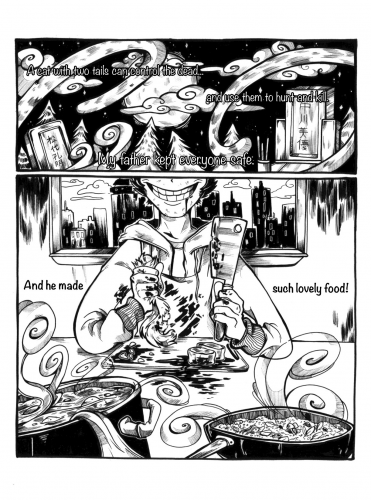
A large component of your stretch goals is bonuses for members of your project, what made you choose to advertise that?
Because I think that the largest part of running a kickstarter is making sure our artists get the reward they deserve. Ten and I made sure we could pay our artists no matter what. The bonuses are built into the kickstarter, but we made sure we could at least pay the artists $50 a page. Artists don’t get paid enough in the first place, and we want to make sure the book is printed, and the artists get paid enough for their work.
In terms of the commissions that are available for backers of $125 or more, what can potential backers expect from commission requests? Does the $1,000 Comics Royalty tier also include a commission from the $125 tier in addition to a 5 page commission from yourself?
Yes, in essence it does, the $1000 tier includes a water color cover for the 5-page commission. What I have done, is to have any commission backers connected via email to the person they request the commission from. After I connect them, I check in via email, and make sure everything went well for both the commissioner and the artist.
Can you tell me a little about your contribution, “C-259”?
It is a sci-fi story, basically set where humanity has lost Earth. It is set in colony 259, one of the last known bubbles of humanity in the universe. Things are going fairly well for them, they are surviving, but then aliens show up, and basically everything gets fucked. The actual story takes place in that colony, and focuses on the choices the main character, Filip Sawicki, chooses to make, given the situation.
VERTOSCOPE has so far made about half of it’s kickstarter goal. There is also a $2,000 dollar Associate Publisher and $5,000 publisher tier, with the latter granting the backer 50 softcover copies of the anthology, a publisher credit, a special bookplate signed by all the creators 15 page comic commission (drawn and colored by Nechama), along with a digitally designed and colored cover.
After talking with Nechama about my personal experiences as a writer hoping to get into comics without currently having an artist, she provided a helpful post by VERTOSCOPE contributor Ursula Wood, to assist others in a similar situation with advice.
Nechama Frier was also kind enough to give a full preview of one of the stories included in the anthology, “Breakfast in Bed”


